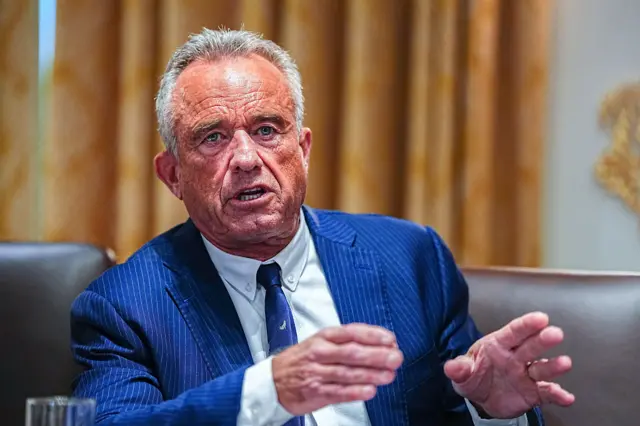Italian fashion designer Giorgio Armani has died at the age of 91, the Armani Group announced on Thursday.
The designer is credited over his decades of practice with curating a quintessentially Italian aesthetic in his clothes, as well as taking Hollywood’s red carpets to new heights.
“Il Signor Armani, as he was always respectfully and admiringly called by employees and collaborators, passed away peacefully, surrounded by his loved ones,” the Armani Group said in a statement, describing the founder as “a tireless driving force.”
“In this company, we have always felt like part of a family,” read a statement provided by the brand on behalf of his family and employees. “Today, with deep emotion, we feel the void left by the one who founded and nurtured this family with vision, passion, and dedication. But it is precisely in his spirit that we, the employees and the family members who have always worked alongside Mr. Armani, commit to protecting what he built and to carrying his company forward in his memory, with respect, responsibility, and love.”
In June 2025, Armani was not present to take his usual bow at the brand’s show during Milan’s Men’s Fashion Week, marking the first time in his career he had missed his own runway event. At the time, the company released a statement that he was “currently recovering at home” without specifying his health condition.
In the current luxury landscape, which is dominated by conglomerates such as Louis Vuitton owner LVMH and Gucci parent company Kering, Armani was one of the few designers to remain the sole shareholder of his company. As of yet, there is no obvious heir to the Armani business, which in 2024 was valued by analysts at Bloomberg Intelligence between 8 to 10 billion euros ($9.3 billion to $11.7 billion).
A string of celebrations for Armani’s 50th year in business have been planned to take place during Milan Fashion Week this month, including the unveiling of an exhibition at the Pinacoteca di Brera — the first at the museum to be dedicated to fashion — and a runway show at Palazzo Brera.
In August, Armani was featured in a cover story by the Financial Times’ supplement HTSI, where he discussed his continued dedication to the fashion industry, and his company, where he still oversees all creative direction. “I don’t know if I’d use the word workaholic, but hard work is certainly essential to success,” he said. “My only regret in life was spending too many hours working and not enough time with friends and family.”

Giorgio Armani, a star-studded legacy
Born in 1934, in the northern Italian town of Piacenza, Armani didn’t show a professional interest in fashion until 1957, after studying medicine and then a stint in the military, he got a job as a window dresser at the historic La Rinascente department store in Milan — a move that would begin his lifelong association with Italy’s fashion capital.
In 1964, designer Nino Cerruti took a chance on Armani, who was by then a buyer at La Rinascente, by giving him a job designing menswear. It was here that he first learned about unstructured jackets — suit jackets with the traditional lining and stiff padding removed to accentuate the wearer’s body — which he would later perfect and become famous for.
While working for Cerruti, Armani met Sergio Galeotti, an architect who would become his life and business partner. Galeotti persuaded Armani to set up his own business, and the two later founded the brand Giorgio Armani in 1975.
Their first menswear collection found success in the US: It was stocked at Barney’s New York in 1976, and the department store even produced a TV commercial introducing Armani to American shoppers (Barneys shut down in February 2020 after filing for bankruptcy). It was soon followed by a womenswear collection, which saw the brand debuting an androgynous look. (“I was the first to soften the image of men, and harden the image of women,” Armani later said.)
His jackets earned the attention of Hollywood. In 1980, Richard Gere famously wore an Armani suit in “American Gigolo,” turning it into a status symbol. Soon, dressing stars for the red carpet became another form of advertising for the brand. Many of the biggest celebrities of the day — Arnold Schwarzenegger, Sophia Loren, Jodie Foster, Sean Connery and Tina Turner, among others — were all pictured wearing its creations. This led to a fierce competition with the other big name of 1980s Italian fashion, Gianni Versace, whose dazzling style stood in stark contrast to Armani’s typically understated looks.
In 1985, Galeotti died from AIDS, leaving Armani as the company’s sole shareholder. Of his relationship with Galeotti, Armani told Vanity Fair in 2000: “Love is too reductive a term. It was a great complicity vis-à-vis life and the rest of the world.”
Over the years, Armani launched a popular diffusion line, Emporio Armani, as well as other successful spin-offs such as Armani Jeans, Armani Exchange and the home interiors brand Armani/Casa. In 2011, he opened a huge Armani complex occupying an entire block in downtown Milan. As well as offering products from various Armani ranges, including chocolates, flowers, jewelry and cosmetics, it also serves as a nightclub and luxury hotel. (This followed the opening of the Armani Hotel Dubai a year earlier in the world’s tallest building, the Burj Khalifa.)

A longtime sports fan, Armani bought Olimpia Milano, Italy’s most successful basketball team, in 2008. He then launched EA7, a sports apparel range inspired by the jersey number of Ukrainian soccer player Andriy Shevchenko, once a striker for AC Milan. Borrowing from that range’s aesthetic, he went on to design the Italian team’s uniforms for the London 2012, Rio de Janeiro 2016 and Tokyo 2020 Olympic games.
Armani’s influence in fashion also extends to the present day: the timelessness and precision of his tailoring has led to a burgeoning secondhand market for vintage Armani designs. His pantsuits, which offered women a powerful and sophisticated alternative in the workplace and beyond, continue to be favored by stars, including Cate Blanchett who opted for a silk, two-piece suit by the label as she attended Wimbledon in 2025.
Armani’s many accolades include being named a Grand Officer of the Order of Merit of the Italian Republic in 2021, one of the country’s highest honors, and a Lifetime Achievement Award from the Council of Fashion Designers of America. He was appointed as a Goodwill Ambassador for the UN’s refugee agency, UNHCR, in 2002.












































